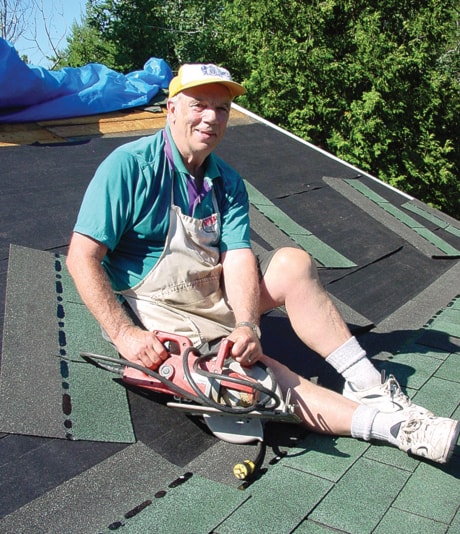I’m a big fan of do-it-yourself home improvements, and whenever I wonder about the wisdom of this strategy I talk to my non-DIY friends.
One couple I know, for instance, hired out the construction of a new home, and it cost them $5,000 in labour for each 40-hour work week clocked in by the two carpenters and one labour that were on the job.
The crew did reasonable work, but figures like that keep home improvements out of reach for many Canadians.
But it doesn’t have to be this way for you.
If you’ve got more time than money, then let me show you three ways to leverage your enthusiasm, transforming it into handsome home improvement results.
The first piece of the puzzle is knowledge. You’ve got to know what you’re doing to succeed, but this is easier than ever to achieve.
For $20 to $50 you can gain years worth of hard-won wisdom from a professional tradesperson, condensed between book covers or on a video DVD.
That’s an amazingly good deal, and it’s why my bookshelves are lined with excellent titles I’ve learned from over the last 20 years.
Most come from The Taunton Press (www.taunton.com; 800-477-8727).
No other publisher I’ve seen even comes close to the quality and scope of hands-on homebuilding knowledge that Taunton offers.
Building products are also easier to use than ever, requiring far less know-how and skill to install successfully.
Flooring, roofing, trim, engineered structural members, plumbing, deck building materials and outdoor paving products, to name a few, are more user-friendly than ever.
Time and finances are the second issue to understand.
If you’re healthy and don’t mind exchanging time spent watching home improvement TV for time spent actually doing home improvements, then DIY is probably more efficient than you realize — even if your progress as a beginner seems slow.
Every hour you work on your own home is an hour of benefit gained.
But an hour worked to earn money at your day job involves a lot of slippage.
Your income shrinks quite a bit after taxes are paid and deductions removed — all before that money turns into a bank balance that you can pay a professional with.
DIY gets even more financially attractive if you’d otherwise have to borrow money for hired-out home improvements.
Tools are the third reason DIY makes so much sense these days.
They’re better than ever and cheaper than ever, and something called a combo kit is a case in point. These prepackaged ensembles of cordless tools usually include a circular saw, a reciprocating saw, a drill and a flashlight, and they’re sold for much less money than individual tools.
In particular, lithium-ion (Li-ion) batteries are making cordless tools lighter in weight, more powerful and easier to use. Look for Li-ion when you’re gearing up for your home-based work campaigns. The best cordless tools in my personal collection all run on lithium-ion batteries.
Besides saving you money, doing-year-old home improvements offers both physical and psychological benefits, too.
It gets you active, makes you think and gives you an outlet for creative accomplishments that you can enjoy personally.
The world needs professionals in the building trades.
We’d never get by without them. That said, when finances force a choice between renovating on your own or not being able to pay someone else to do it for you at all, then why not take matters into your own hands?
You might be surprised what you can do with the right planning, philosophy, information and tools. Not to mention how much enjoyment you’ll have making good things happen under your own steam.
Steve Maxwell is Canada’s award-winning home improvement expert, and technical editor of Canadian Home Workshop magazine. Sign up for his free homeowner newsletter at www.stevemaxwell.ca
